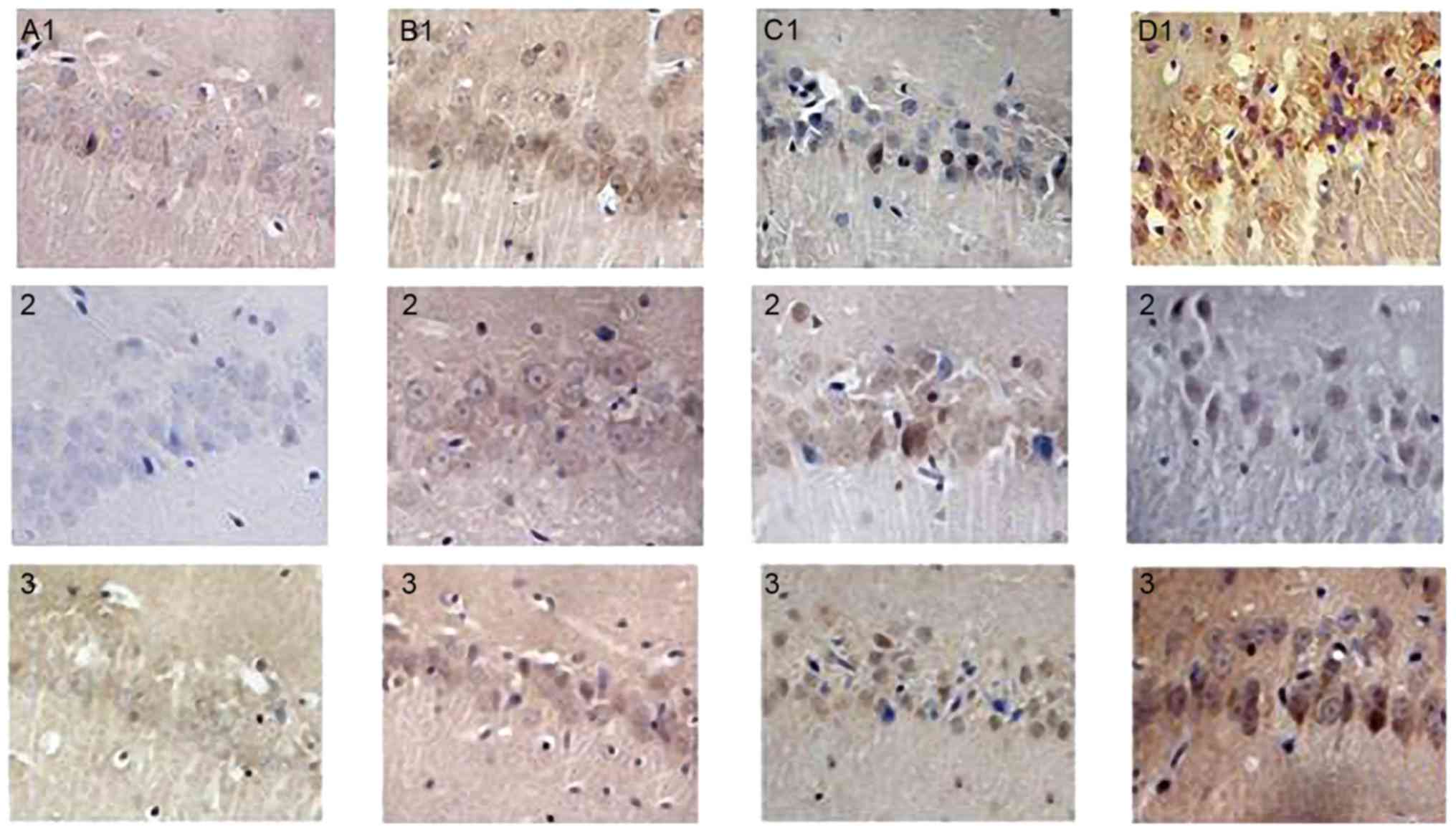Role of the PI3K‑mTOR autophagy pathway in nerve damage in rats with intermittent hypoxia‑aggravated whole brain ischemia
- Authors:
- Published online on: June 4, 2019 https://doi.org/10.3892/mmr.2019.10337
- Pages: 1411-1417
Metrics: Total
Views: 0 (Spandidos Publications: | PMC Statistics: )
Total PDF Downloads: 0 (Spandidos Publications: | PMC Statistics: )
Abstract
The present study aimed to compare the expression of phosphatidylinositol 3‑kinase (PI3‑K), mammalian target of rapamycin (mTOR) and Beclin‑1 between the hippocampi of normal rats and intermittent ischemic rats following whole brain ischemia/reperfusion (I/R), and investigate the role of the PI3K‑mTOR autophagy pathway in rat nerve damage following intermittent hypoxia (IH)‑aggravated whole brain ischemia. A total of 80 male Wistar rats were divided by random number table into a sham operation group (SO group; 20 rats), pure cerebral ischemia/reperfusion group (I/R group; 20 rats), intermittent hypoxia for 7 days‑I/R group (IH7+I/R group; 20 rats) and intermittent hypoxia for 21 days‑IR group (IH21+I/R group; 20 rats). Prior to model establishment, the rats in the IH7+I/R group and IH21+I/R group underwent intermittent hypoxia for 7 and 21 days, respectively. The optimized Pulsinelli 4‑vessel occlusion method was used to prepare the I/R model. H&E staining and transmission electron microscopy were performed to observe the morphological changes of nerve cells in the hippocampus. Immunohistochemical and reverse transcription‑quantitative polymerase chain reaction (RT‑qPCR) analyses were performed to detect the expression levels of PI3‑K, mTOR and Beclin‑1 in the hippocampal brain tissues of the rats. A Morris water maze test was used to assess rat learning and memory. The results showed that, compared with the SO group, the rats in the I/R group exhibited structural damage in neurons (shown by H&E staining), a reduced number of viable nerve cells, and decreased learning and memory ability at each time point. The results of the immunohistochemical analysis showed that the numbers of PI3‑K, mTOR and Beclin‑1 immunopositive cells were increased (P<0.05). The RT‑qPCR analysis showed increased expression levels of PI3‑K, mTOR and Beclin‑1 (P<0.05). Compared with the I/R group, the rats in the IH‑I/R groups exhibited aggravated structural damage in neurons, shown by H&E staining and electron microscopy. The number of viable nerve cells was decreased, and the rats exhibited decreased learning ability and memory. The immunohistochemical analysis revealed that the numbers of PI3‑K, mTOR and Beclin‑1 immunopositive cells were increased (P<0.05). The RT‑qPCR analysis showed increased expression levels of PI3‑K, mTOR and Beclin‑1 (P<0.05). The above changes were more marked in the IH21+I/R group (P<0.05). Taken together, IH was shown to aggravate nerve damage following whole brain I/R. The underlying mechanism was associated with activation of the PI3K‑mTOR‑autophagy pathway and increased loss of nerve cells.












